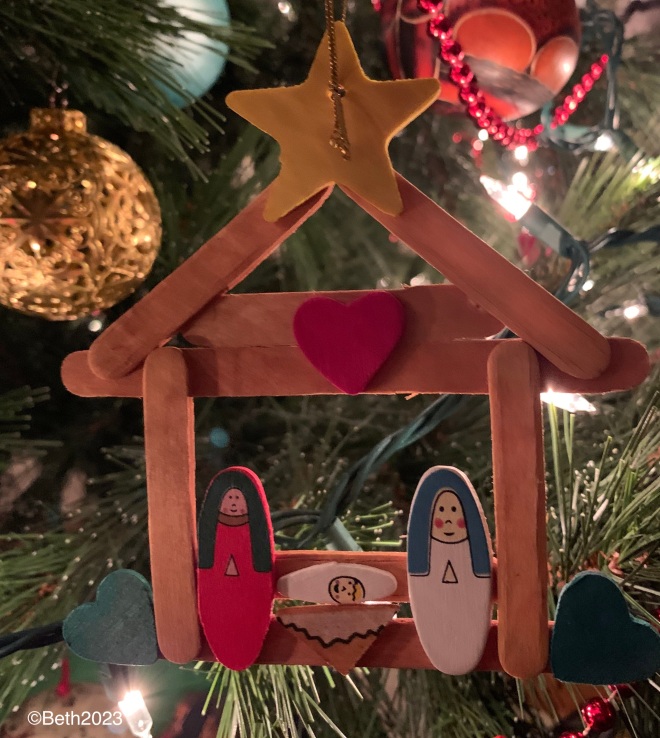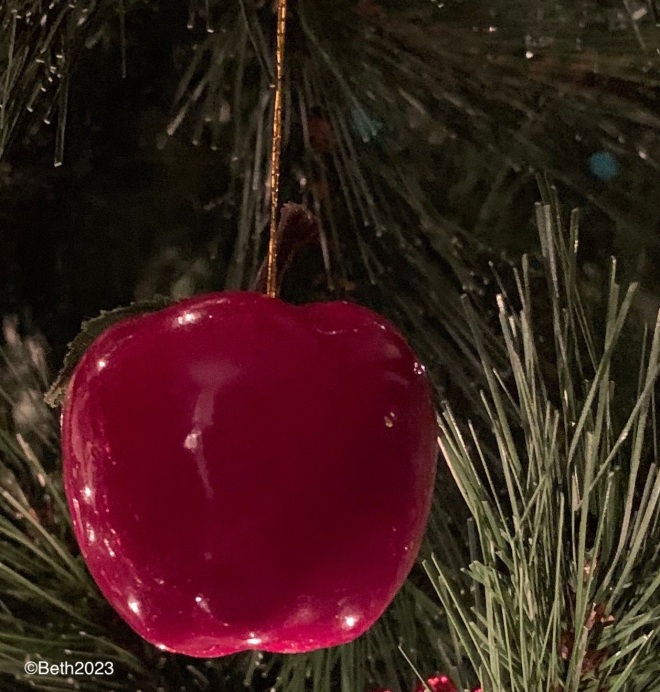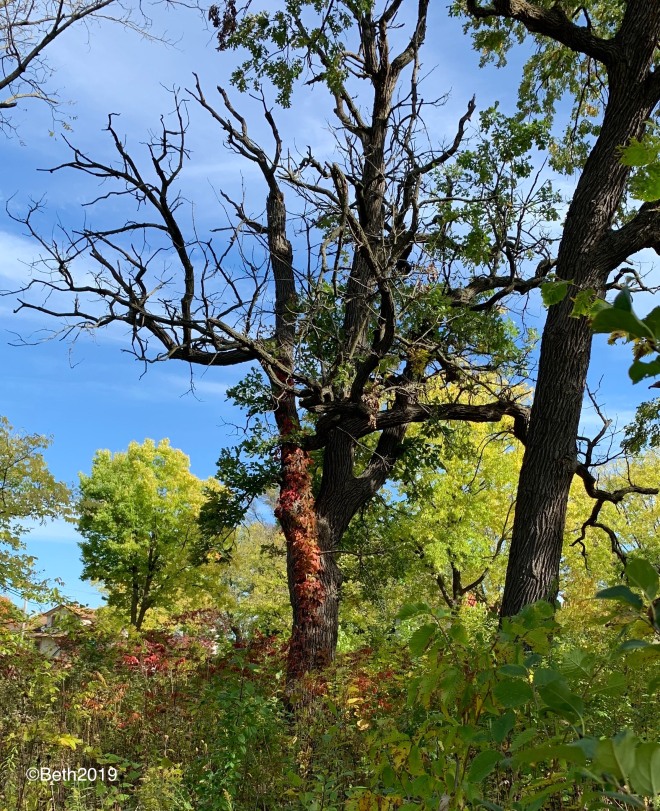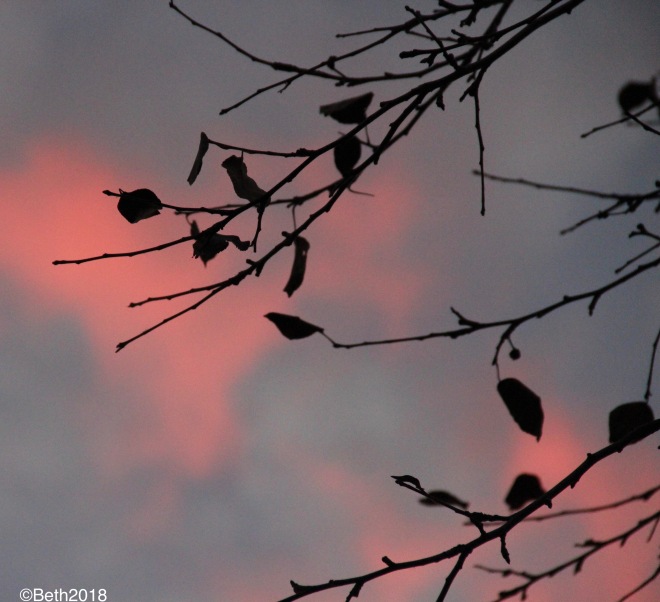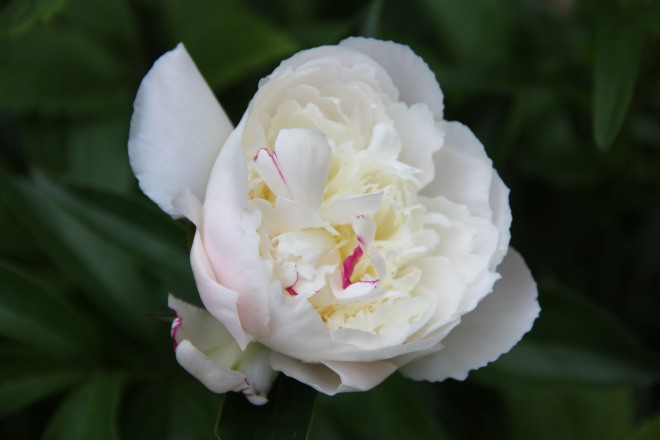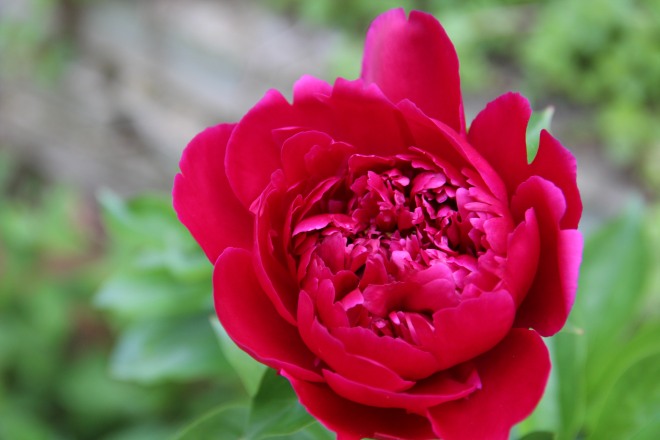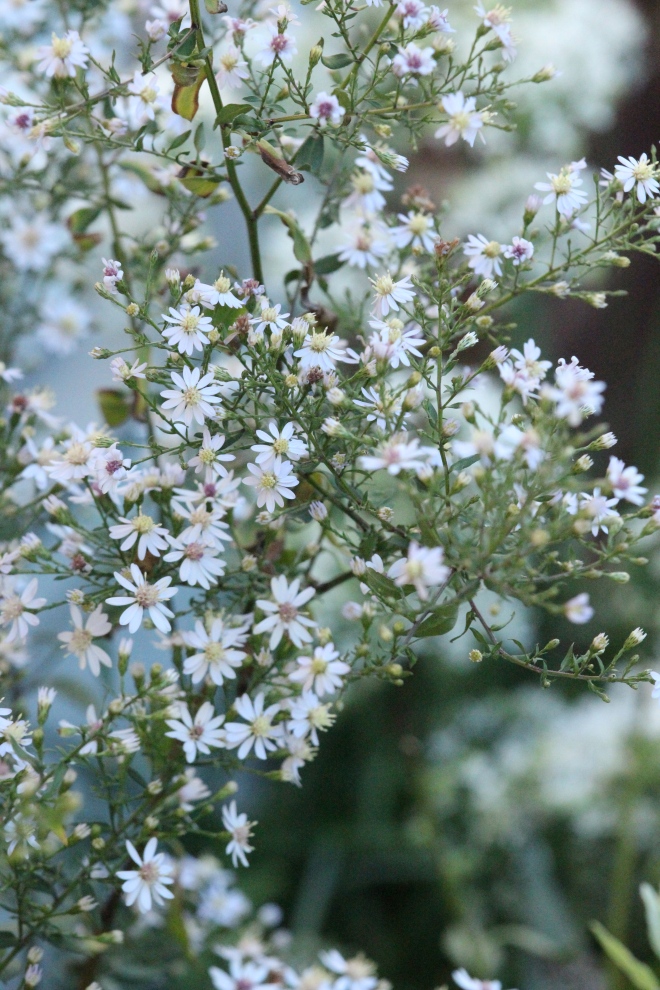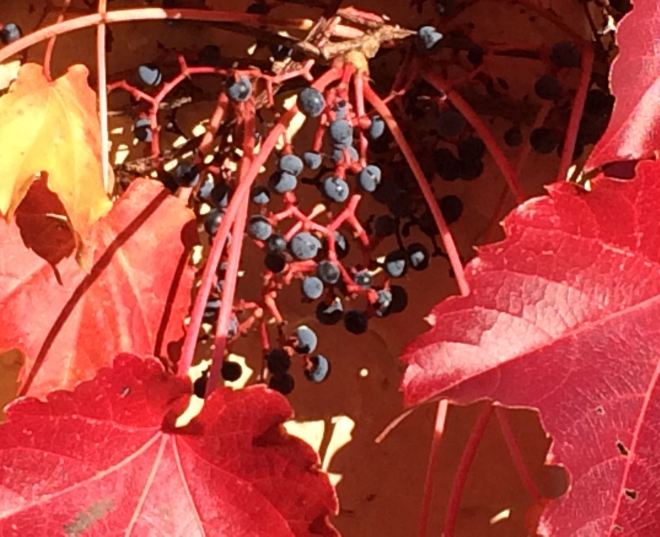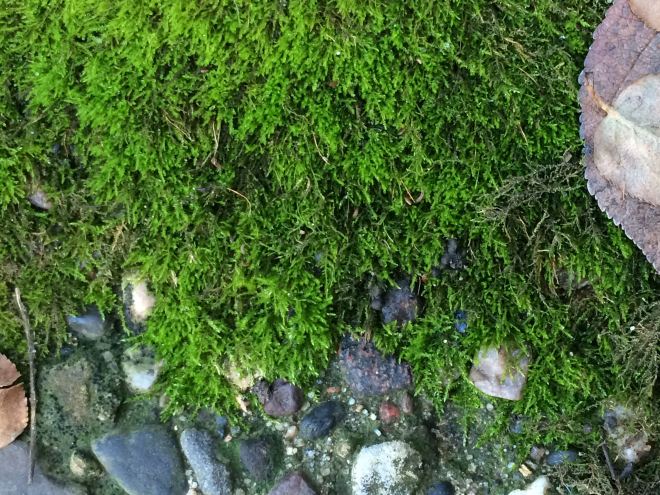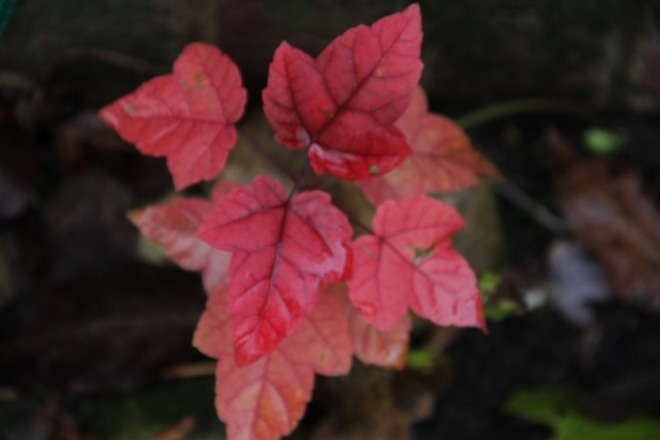The ornaments hanging on our family Christmas tree hold memories of people we cherish, events from our lives, times past and present. Most were gifts from family members, close friends, and students whom I taught in middle school; all are meaningful.
As I hang them on our tree, memories flare to life. I recall the excitement and happiness of the gift givers, especially our young son and my students. Their faces, shining with excitement and joy to share their presents, were gift enough.
Some of the ornaments are handmade, such as the madonna and child that my sister cross-stitched when she was pregnant with her first child. A hand-knitted pair of tiny green-and-white mittens, a child’s wooden rocking horse, miniature Winnie-the-Pooh and Piglet figurines, and a sliver of a Santa moon are just a few of many special ornaments we received when our son was a baby. As he grew, he created his own decorations; from his toddler hand print and “Christmas countdown” paper chains, to a Nativity creche, candle, and beaded snowflake ornaments made in elementary school. He was so eager to show us his creations that it was hard for him to wait until Christmas!
Many of our ornaments symbolize nature’s gifts: Owls, warblers, black-capped chickadees, cardinals, a bumblebee, cricket, chipmunk, raccoon, miniature bears, Christmas acorns and pinecones. They evoke memories of hikes, biking trips, and quiet days spent at our cabin. I recall a family of barred owls raising a ruckus on a nightly hunt in the oak trees, the red fox family that lived under our porch one spring, wood thrushes’ morning chorus and the serenade of crickets on hot summer nights.
More than two dozen tiny red apples punctuate the branches with bright bursts of color. They are from former students and from my mother, who always finished her tree with the bright globes. This is our sixth Christmas without Mom. I recall the aromas of balsam fir and freshly baked Christmas cookies that scented our home each year as I grew up. Old-fashioned butter cookies, merry mincemeat bars, Christmas cake cookies and spritz are just a few of the treats that Mom baked each December. There are also jolly snowman ornaments that my dad gave to our son. They are happy-looking fellows that remind me of Dad, who died little more than three years ago. I miss him and we are so grateful for the joyful Christmas we shared together his last year.
Fragile glass and delicate handmade ornaments, created by a group of Ukrainian nuns, add a traditional touch to our tree. There are six soft-blue Wedgwood ornaments from my aunt. Old-fashioned glass icicles, teardrops, globes and other shapes glow in the soft white light. They stir my earliest childhood memory of Christmas: My brother and I would make a blanket nest under the lighted Christmas tree. In our darkened living room, we listened to Christmas carols and talked softly. We watched the multicolored lights and our reflections dance across the glass globe ornaments hanging above us. I felt peaceful and content. I never wanted the Christmas season to end.
In the yearly ritual of decorating our tree I experience, again, the love and joy of so many cherished people — both living and those no longer with us. I hold them close and bless each one in gratitude.


